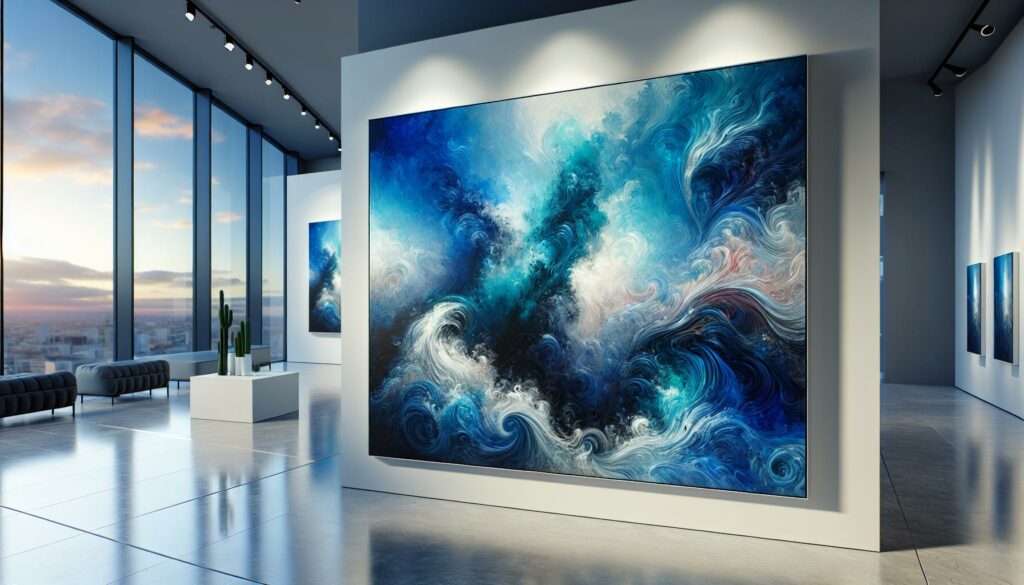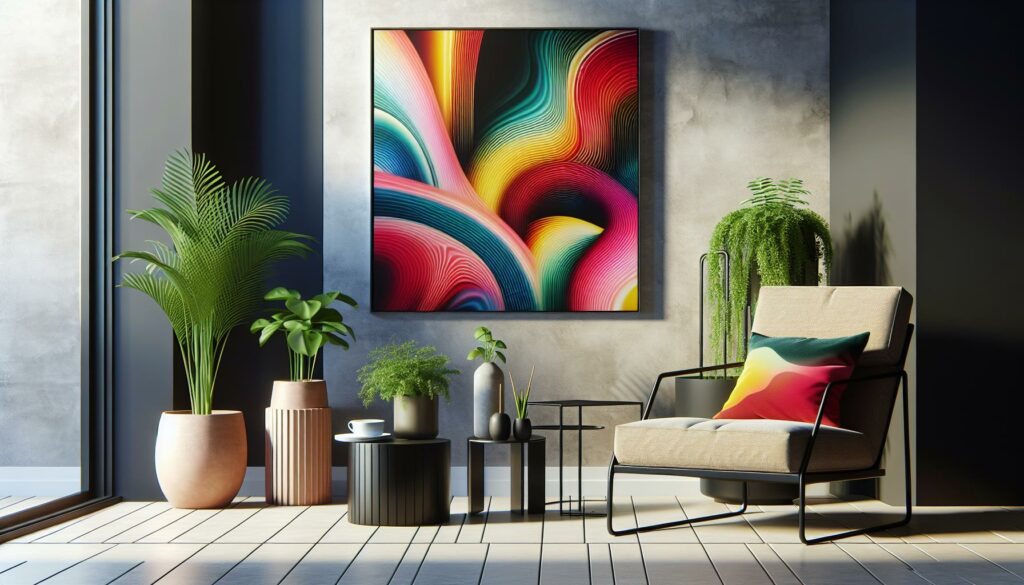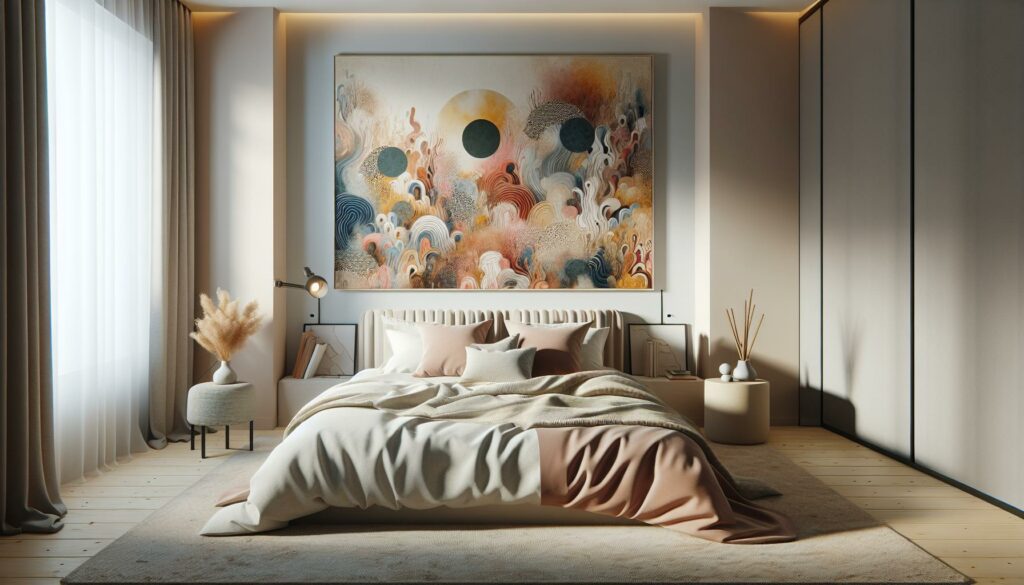Abstract blue art captivates viewers with its mysterious allure and endless interpretations. From deep ocean hues to ethereal sky tones this mesmerizing genre transforms ordinary spaces into captivating visual experiences. Artists worldwide have embraced blue’s versatility to express emotions depth and tranquility in their abstract works.
Throughout history blue has held a special place in the art world symbolizing everything from divinity to melancholy. Today’s abstract blue artists push boundaries by combining traditional techniques with innovative approaches creating pieces that challenge perceptions and stir emotions. Whether it’s bold brushstrokes swirling patterns or subtle gradients abstract blue art continues to evolve and inspire new generations of creators and collectors.
Abstract Blue Art
Abstract blue art transcends traditional representation by combining non-objective forms with various shades of blue. This artistic approach emphasizes emotional expression through color psychology shapes compositions.
The Psychology of Blue in Abstract Art
Blue in abstract art creates distinct psychological responses in viewers. Studies by color psychologists indicate that blue tones evoke feelings of tranquility serenity calmness. The human brain processes blue wavelengths differently from other colors triggering the release of calming chemicals.
Specific psychological impacts include:
- Deep blues promote introspection meditation focus
- Light blues enhance creative thinking spatial awareness
- Cerulean tones reduce stress anxiety levels
- Azure shades improve cognitive processing memory retention
Historical Significance of Blue Abstraction
The evolution of blue in abstract art traces back to early 20th-century modernist movements. Wassily Kandinsky introduced revolutionary blue compositions in 1911 establishing new paradigms in non-representational art. Yves Klein developed International Klein Blue (IKB) in 1960 transforming abstract expression.
- Post-impressionist use of emotional blue tones
- Der Blaue Reiter movement’s spiritual blue aesthetics
- Abstract Expressionism’s exploration of blue depth
- Minimalism’s focus on monochromatic blue fields
| Period | Notable Blue Innovation | Impact |
|---|---|---|
| 1910s | Spiritual Abstracts | Established blue as metaphysical color |
| 1950s | Color Field Painting | Emphasized pure blue expression |
| 1960s | IKB Development | Created new blue pigment standards |
Famous Abstract Blue Artworks Through History
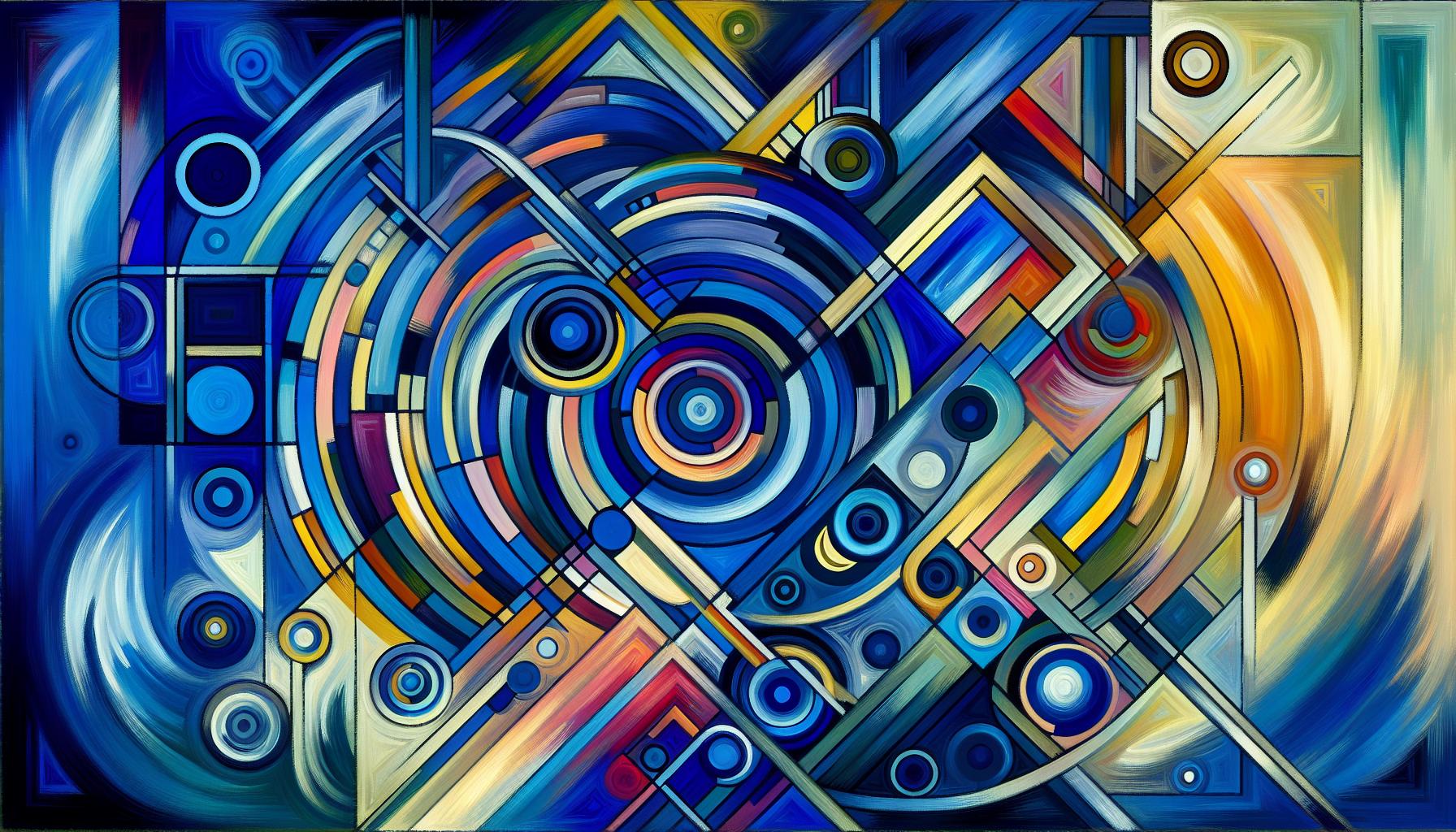
Abstract blue art achieved significant milestones through masterpieces that redefined artistic expression across different periods. These works transformed the perception of color in abstract art while establishing new techniques and approaches.
Wassily Kandinsky’s Blue Period
Kandinsky’s “Blue Mountain” (1908) marked his transition into abstract expressionism through bold blue compositions. His piece “Several Circles” (1926) showcases concentric rings of varying blue hues floating against a dark background, demonstrating his theory of color spirituality. The artist’s “Composition VIII” (1923) features geometric shapes in multiple blue tones, creating dynamic movement across the canvas. Notable works from this period include “Blue Segment” (1921) and “Sky Blue” (1940), which emphasize spiritual connections through pure color relationships.
Yves Klein’s International Klein Blue
Klein patented his signature ultramarine pigment (IKB) in 1960, creating a unique blue hue that became synonymous with his artwork. His “Anthropometry” series features blue-painted models pressing their bodies against canvas, creating distinctive human imprints. “Relief éponge bleu” (1960) incorporates natural sponges soaked in IKB, adding texture to monochromatic surfaces. The “Monochrome” series presents pure IKB canvases that eliminate all compositional elements, focusing solely on the color’s profound impact. Klein’s masterpiece “FC1” stands as one of the most valuable blue abstract artworks, selling for $36.4 million in 2012.
Techniques Used in Creating Abstract Blue Art

Abstract blue art employs diverse technical approaches to achieve depth, emotion and visual impact. Artists combine multiple methods to create compelling compositions that showcase the versatility of blue pigments.
Layering and Textures
Creating abstract blue art involves strategic layering techniques to build dimensional depth. Artists apply multiple translucent washes of blue pigments, allowing each layer to dry before adding subsequent coats. Impasto techniques create textural elements through thick applications of paint using palette knives or brushes. Surface manipulation methods include scratching, scraping or pressing materials into wet paint to generate visual interest. Contemporary artists incorporate mixed media elements like sand, fabric or paper to enhance tactile qualities. Digital artists utilize virtual layers in software programs to achieve similar effects through opacity adjustments filters.
Color Theory and Composition
Color theory guides the strategic use of blue tones in abstract compositions. Artists combine analogous colors like purple blue turquoise to create harmonious transitions. Complementary orange accents generate dynamic contrast against blue backgrounds. Value variations from light cerulean to deep indigo establish visual hierarchy within artwork structures. Artists manipulate saturation levels to direct viewer focus toward focal points. Composition techniques include asymmetrical balance geometric patterns repetitive motifs. The rule of thirds guides placement of key elements while negative space emphasizes form relationships. Artists layer transparent glazes to achieve optical color mixing effects.
Modern Interpretations of Abstract Blue Art
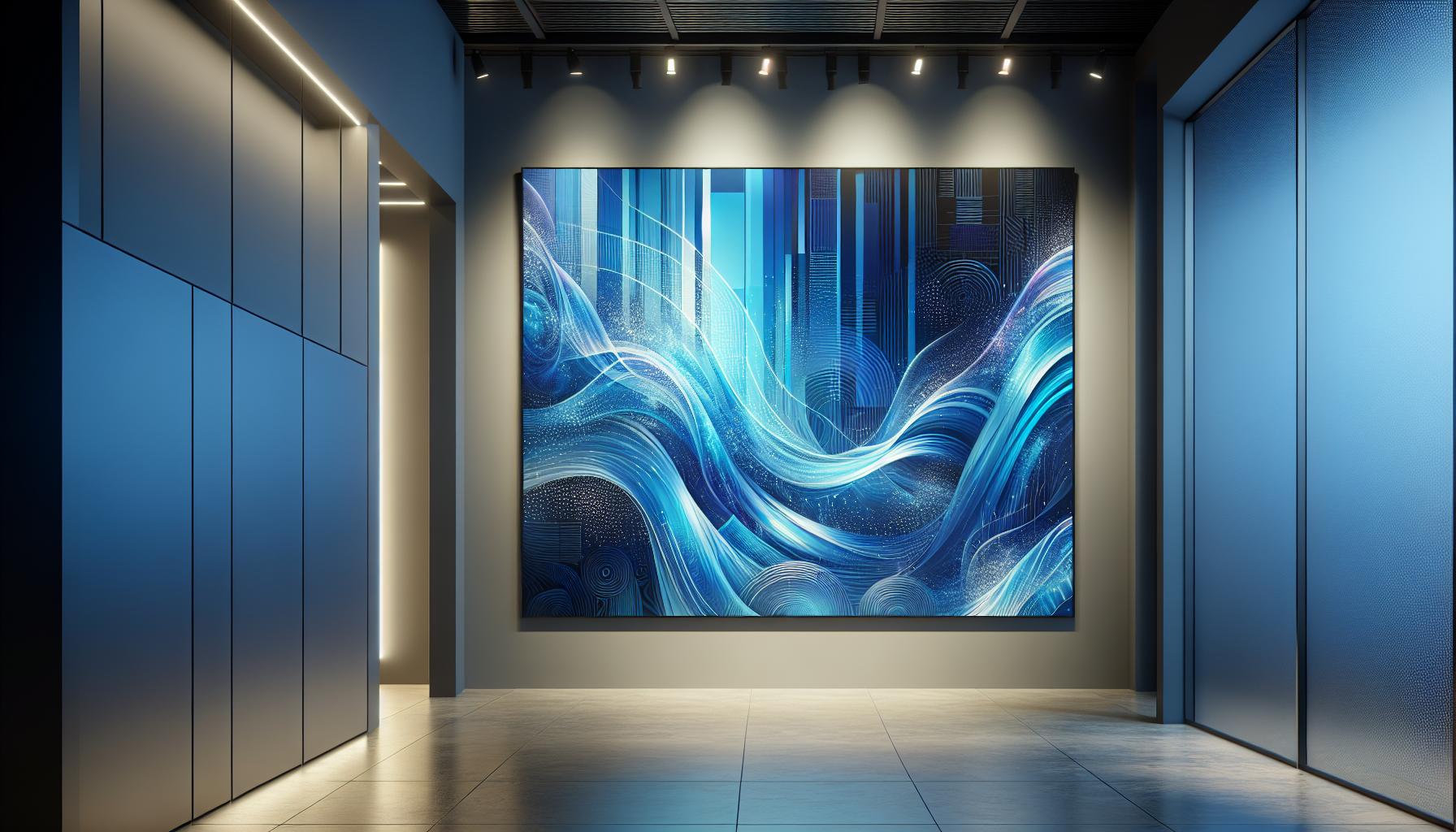
Contemporary artists interpret abstract blue art through innovative digital technologies blended with traditional techniques while exploring new dimensions of emotion expression.
Digital Abstract Blue Art
Digital technology transforms abstract blue art through sophisticated software tools like Adobe Creative Suite Procreate AI-powered generators. Digital artists manipulate blue hues with unprecedented precision creating ethereal gradients fractal patterns dynamic compositions. Advanced rendering techniques produce luminescent effects impossible in traditional media such as glowing blue nebulae crystalline structures fluid dynamics. NFT platforms showcase digital abstract blue artworks featuring interactive elements animated sequences generative art pieces. Notable digital platforms including SuperRare Foundation OpenSea display collections valued between $5,000 to $250,000 for premier pieces.
Contemporary Blue Abstract Artists
Jason Anderson creates large-scale digital prints featuring pixelated blue abstractions that sold at Christie’s for $45,000 in 2022. Maya Lin incorporates environmental data into her blue abstract installations exploring climate change through digital mapping techniques. Refik Anadol generates AI-driven blue abstractions projected onto architectural surfaces including his “Machine Hallucinations” series displayed at MoMA. Digital artist Pak sold “The Merge” – a dynamic blue abstract NFT collection – for $91.8 million in December 2021. Contemporary galleries including Pace Digital Unit regularly exhibit new media artists specializing in blue abstract works incorporating augmented reality virtual environments generative algorithms.
Collecting and Displaying Abstract Blue Art
Art collectors enhance their abstract blue art collections through strategic acquisition from established galleries like Gagosian Gallery, Hauser & Wirth and Pace Gallery. Professional art advisors evaluate pieces based on factors including provenance, condition and market trends, with prices ranging from $2,000 for emerging artists to $500,000 for established names.
Display locations impact the visual presence of abstract blue artwork:
- North-facing walls maximize natural light exposure for deeper blue tones
- LED gallery lighting at 4000K color temperature highlights subtle variations
- Minimum 24-inch spacing between pieces creates visual breathing room
- White or light gray walls at 60% reflectance value optimize contrast
Storage considerations protect investment value:
- Temperature control between 70-75°F (21-24°C)
- Relative humidity maintained at 45-55%
- UV-filtered glass or acrylic glazing blocks 98% of harmful rays
- Acid-free matting materials prevent degradation
Authentication documentation includes:
- Certificates of authenticity from galleries
- Detailed condition reports with high-resolution images
- Purchase receipts and insurance appraisals
- Exhibition history and literature citations
Digital collections management platforms like ArtBinder and Artlogic track artwork details, locations and market values. Insurance coverage through specialized art insurers provides protection with typical annual premiums of 0.1-0.3% of the collection value.
Rotating displays every 4-6 months prevents prolonged light exposure while maintaining visual interest. Professional art handlers ensure proper installation using museum-grade hardware rated for specific artwork weights and dimensions.
Abstract blue art stands as a testament to the enduring power of color in artistic expression. From its historical roots to contemporary digital innovations the genre continues to captivate audiences and push creative boundaries. Modern artists blend traditional techniques with cutting-edge technology creating works that resonate with collectors and art enthusiasts alike.
The market for abstract blue art remains robust with pieces commanding significant values at prestigious galleries and auctions. As technology advances and new artistic possibilities emerge this dynamic genre will undoubtedly continue to evolve while maintaining its ability to evoke profound emotional responses and spark meaningful dialogue in the art world.

